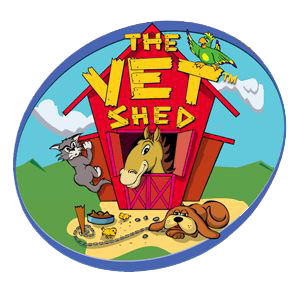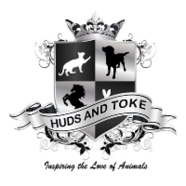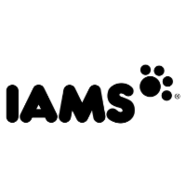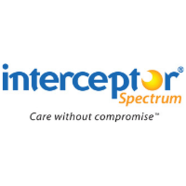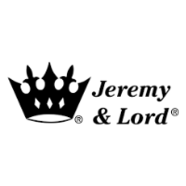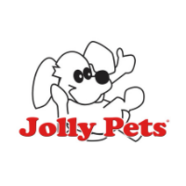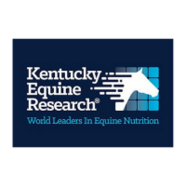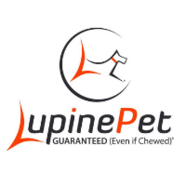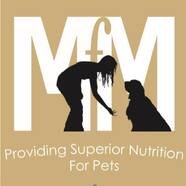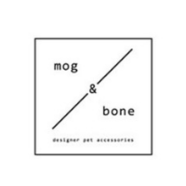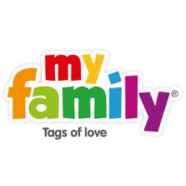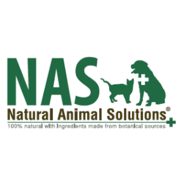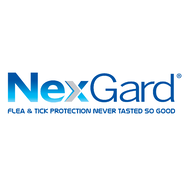12 Things You Need to Know about Kidney Disease in Cats
Date Posted:17 September 2020
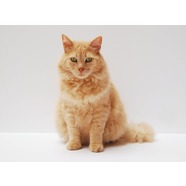
It may come as a surprise but kidney in disease in cats is quite common, with 1 in 3 cats suffering from this disease in their lifetime.
You might already have a cat that has been diagnosed, or even sadly passed away due to this disease. If you don’t know much about it, but you love having cats as pets then chances are you will probably have to deal with it sometime in the future!
There are many different reasons why cats can develop kidney disease, and the symptoms aren’t always obvious, such as subtle weight loss, urinating more, increased thirst, and decreased appetite. However, the scary thing is that by the time your cat starts showing obvious signs, there is usually quite a lot of kidney damage present. You need to catch this disease early for a better outcome.
So, lets take a look at 12 things you REALLY need to know about kidney disease in cats…
#1 The Kidneys filter the blood (PLUS do lots of other important jobs too)
To understand what kidney disease is, then you need to know that the kidneys actually play a really important role in the body. That is why so many things can go wrong when they aren’t working properly. Normally, the kidneys have five main roles:
- Filter wastes from the blood
- Regulate blood pressure
- Control red blood cell production
- Produce an active form of vitamin D, which promotes strong, healthy bones
- Balance body water, salts and acids
#2 Acute vs Chronic: What is the Difference?
There are two types of kidney disease (also known as kidney or renal failure) and they both have different underlying causes, treatments and prognosis.
- Acute kidney disease occurs suddenly, over a day or a week. It can happen to any age of cat, and common causes include: poisons (e.g. anti-freeze, lilies, human medication), trauma, severe infection or a sudden blockage in the flow of urine.
- Chronic Kidney disease (CKD) occurs more slowly over months or sometimes years. It is more common in old cats (7 years and older). Causes of CKD can include: kidney bacterial infections, kidney stones, Viral infections in cats (FIV/FeLV/FIP), dental disease, kidney cysts, high blood pressure, thyroid disease, cancer or idiopathic (which means the cause is unknown).
Both acute and chronic kidney disease will result in a very ill and poorly cat. However, if acute kidney disease is diagnosed and treated quickly, then the kidney damage may be reversed. In chronic kidney disease the damage cannot be reversed or cured, and the cat needs long term management.
#3 Know the Symptoms
Cats can be experts at hiding signs of sickness and this combined with the fact that the symptoms of kidney disease can be subtle, can make recognising this disease difficult for any owner.
Even more concerning is that once your cat starts to show signs of illness, the kidneys usually have lost most of their function!
Clinical signs of kidney disease may include:
- Increased drinking
- Increased urination
- Decreased appetite
- Showing pain during urination
- Weight loss
- Vomiting
- Dullness or lethargy
- Bad breath (ammonia like odour)
- Collapse
If you notice any of these signs in your cat, then it is bets to schedule an appointment with a veterinarian sooner rather than later.
#4 Kidney Disease Can Cause Anaemia
The kidneys produce a hormone called erythropoietin, which controls the production of red blood cells in the bone marrow. Red blood cells transport oxygen from the lungs to the organs around the body.
If a cat has kidney disease then it often fails to produce enough erythropoietin, meaning that the levels of red blood cells slowly decrease causing anaemia. Anaemia can cause the cat to feel tired, weak, depressed and have a reduced appetite. It can be obvious during a physical examination as it causes the gums to be paler then normal and may cause a faster heart rate than normal too.
Anaemia is diagnosed from a blood sample and a complete blood count. Anaemic cats with CKD are regularly monitored and are often managed with nutritional supplementation of iron, and an injection which stimulates red blood cell production (e.g. darbopoetin).
#5 There is a Blood Test Which Can Detect CKD MUCH Earlier!
A diagnosis of CKD is made from an analysis of a blood sample and a urine sample. Two important substances in the blood are measured, urea and creatinine, which are excreted by the kidneys.
Usually during kidney disease, these substances will be at higher levels than normal. Once urea and creatinine are at high levels, the kidneys are not working properly and may have permanently lost much of their ability to function. However, other conditions and diseases can cause these enzymes to increase too, therefore it is important that a urine sample is analysed at the same time. The urine sample is checked for how well the kidneys are concentrating the urine (the specific gravity), signs of infection, excess protein, crystals, blood and ketones.
However, in recent times another blood test is available called SDMA (symmetric dimethylargine). This test allows much earlier detection of CKD, months to years earlier than previously possible, often before symptoms are even present. This test is also useful for cats showing signs and diagnosed with chronic kidney disease, to decide how much kidney damage is present. The International Renal Interest Society suggests that SDMA testing be used along side standard methods (urea, creatinine and urinalysis) to help figure out the the best course of treatment for the cat.
#6 It Is Important to Monitor Phosphorus
Phosphorus is an essential mineral, that is necessary for life. It is needed to build strong bones and teeth, energy production and for the growth and repair of cells and tissues.
Normally, the kidneys remove any excess phosphorus from the blood, however, during kidney failure it is common for the levels to creep up and cause a number of serious problems in the body. High phosphorous levels in the blood is known as hyperphosphatemia.
As phosphorus levels increase in the blood, calcium is pulled out of the bones too, slowly making them weak. This can lead to vague clinical signs of weakness, tremors and decreased appetite. Phosphorus levels can be managed through a special diet or phosphorus binding medication prescribed by your veterinarian.
One study found that in cats with chronic kidney disease, there is a significant association between hyperphosphatemia and reduced survival time. Therefore, it is important to regularly monitor the levels. If your cat has kidney disease, make sure you ask your vet about your cat’s phosphorus levels!
#7 High Blood Pressure Can Cause Problems
High blood pressure is also known as hypertension, and is a common consequence in cats with kidney disease. One study even found that 60% of cats with CKD have hypertension problems too.
Did you know that high blood pressure can cause numerous problems in your cat’s body? Common problems include eye problems or even blindness, and it puts extra pressure on the activity of the heart and kidneys.
Usually blood pressure is measured using a specialised monitor with a small inflatable cuff placed on the cat’s tail or paw, which measures the arterial blood vessel pressure. Often cats with hypertension may benefit from additional medication to help reduce their blood pressure, as part of their kidney disease treatment plan.
#8 Fluids are Important
Fluid therapy is a really important part of the treatment and management of cats with kidney disease. Initially it is often administered via an intravenous route when the cat is hospitalised, then sometimes it may be given subcutaneous (under the skin) as a less invasive and more long term option at home.
Fluid therapy helps to correct dehydration and electrolyte imbalances in the body, it also helps to flush out any toxins which have built up in the blood when the kidneys aren’t working well.
Cats with CKD are much more likely to become dehydrated as their kidneys just can’t conserve water as they should. Therefore, it is extremely important to encourage your cat to have a good water intake, by offering fresh water in different bowls, using water fountains or flavoured water to encourage extra water intake.
#9 Nausea Sucks
Often the most frustrating part of kidney disease is trying to encourage a sickly, nauseous and likely vomiting cat to want to eat again. It can take weeks for them to get their normal appetite back, once they have started on an appropriate treatment plan. Sometimes, the cat goes to the food bowl but then turns away at the thought of trying to eat, when it obviously feels so ill. It can be difficult for an owner to watch, as they feel completely helpless. Offering too many varieties of food can often make the cat feel worse!
However, there are a lot of options available to help improve a cat’s nausea and appetite. Often fluids and regular anti-sickness medications will make most cats feel much better, and they may attempt to eat. Other cats may be candidates for appetite stimulating medication (e.g. mirtazapine). Getting a cat with kidney disease back to his normal appetite is a big step in the right direction!
#10 Start A Special Renal Diet
Dietary management is REALLY important. Studies have found that feeding a renal diet, specially formulated for cats with kidney disease long term, will improve their survival time.
When possible cats with CKD should be fed wet/tinned food, as it helps to increase their water intake too.
There are a few important aspects of feline renal diets which help improve the function of the struggling kidneys:
- Low protein content
Restricting the protein content of the diet, helps to take some workload off the kidneys and reduce the build-up of toxins in the blood. A restricted protein diet has been shown to improve the quality of life of cats with CKD. However, care should be taken not to reduce the protein level of the diet too low, which could be dangerous for the cat’s health.
- Restricted Phosphorus
In CKD, phosphorus levels often increase as it is not effectively removed by the kidneys. High phosphorus levels can cause lots of problems in the body. Restricting the phosphorus levels in the cat’s diet, can help to protect the kidneys and slow down the progression of the kidney disease. Therefore, phosphorus restriction has been linked to extending the life expectancy of cats with CKD.
There are lots of commercial feline renal diets available. Talk to your veterinarian about which one is best for your cat if he has CKD. If you normally prepare your cat’s food at home, then you need to seek the help of a veterinary nutritionist. Getting the correct balance of proteins, salts, minerals and vitamins is not easy!
# 11 Seek Specialist Help
You may really like your normal veterinarian but don’t feel bad if you want a second opinion, especially if they are not experts in dealing with feline kidney disease. The management of kidney disease in cats is always evolving and if you want specialist advice then you should seek an appointment with a board certified internal medicine specialist.
#12 Screening Saves Lives
CKD is a common feline disease, with around 30-50% of cats over 15years having signs of the disease. Routine screening of mature or older cats is a great way to catch the disease early.
Diagnosing CKD early can help to prolong your cat’s life and importantly maintain a good quality of life for longer. A vet visit once or twice a year, allows the vet to carry out a full physical exam and monitor your cat’s weight. Ideally a urine sample will be checked at each visit too, and if there is any suspicion of kidney disease, a quick blood sample is all that is needed to check.
Huds and Toke
Huds and Toke is an Australian pet treat company that makes high quality delicious goodies for your pets! These treats are all natural and are great for a sweet reward. ...
Iams
Iams pet food provides premium nutrition for your furry friend. With food for different life stages and sizes it is easy to find a food that will suit your cat. Cats can be fussy eaters so it is great to know that these foods have been tried and tested on cats to make sure they get the flavour just right. ...
Interceptor Spectrum
Interceptor is a monthly chewable made from delicious chicken. It provides your dog protection from heartworm and intestinal worms. 94% of dogs eat Interceptor straight from the hand! ...
IO
iO is an Australian made brand that creates an extensive range of equine health products, animal health products and much more. iO is top quality for everyday value! Whats not to love. ...
Ivory Coat
Australian made Grain free foods for your pets. Ivory coat is not just another pet food. It contains no grains or fillers, with meat the #1 ingredient. With a range of both wet and dry foods your companion will be equipped with complete and balanced nutrition. ...
Jackson Galaxy
Only the top toys make it through to the Jackson Galaxy range. Jackson Galaxy is a cat behaviourist that has created his own line of cat toys that your cat is destined to adore! Browse through each product and see which your cat would like best. ...
Jeremy and Lord
Jeremy Lord is a premium brand of equestrian gear for horses. Made with quality leather you can be sure that these products will last (Yes even around horses!). Excellent fitting and comes in ranges from Pony, Cob and Full. Exceptional quality and value, Jeremy & Lord® Fine Bridleware will satisfy the needs of the most discerning equestrian. Handmade by skilled artisans trained in the best British tradition, whose pride of craftsmanship can be seen in every article bearing the Jeremy & Lord® name. Beautiful drum dyed leather is supple and breaks-in immediately. ...
Joint Guard
Joint Guard is a product formulated for dogs and cats that are suffering from arthiritic problems. Every pet deserves to keep moving and enjoy their life. It comes in a powder and chew form no matter what your pet prefers. ...
Jolly Pets
Make today an adventure with Jolly Pets! A strong emphasis has been placed on jolly pets to have the highest durability and quality. With brand new never before seen products, your pets will love playing with these new toys. ...
Kazoo
Kazoo excites, entices and brings joy to pets and pet owners all over the globe. With simple and fun pet gear your dog will love, Kazoo is a brand your pet can love and trust. ...
KER
KER develops unique, effective nutritional supplements and exclusive feed ingredients. KER targets points of problems and solves them with simple and easy products that will have your pets feeling the best they can. ...
KONG
Kong helps pets unleash the power of play through its inovative designs and durability. With a huge range of toys that have been tried and tested by pets all over the world, Kong has become one of the most well known brands across the pet industry. ...
Lupine
Exceptional collars, leashes and accessories for dogs and cats. Lupine products are guarenteed even if they are chewed! Lupine promises the best quality for your pets, no matter what. ...
Meals for Mutts
Meals for Mutts is a premium Australian made food loved by cats and dogs around the country. MFM foods are packed with nutrients and are completely balanced for superior nutrition. You will see a huge improvement in your pets overall wellbeing on this organic, natural pet food. ...
Mog & Bone
Mog and Bone create designer pet products that follow the trends of fashion and home design. Mog and Bone products are not only designed to look good but provide superier comfort and high functionality. A brand for humans and pets to enjoy together! ...
My Family
My family pet ID tags are an essential for every pet! Not only are they vital in ensuring your pets safety, they provide your pet with a stylish accessory. There are hundreds of different tags to choose from! Browse the range of unique pet tags that could one day save your pets life. ...
Natural Animal Solutions
NAS gives pets natural health benefits using the science behind naturopathy. They are there for every pets need, every day. If your pet has a problem such as itchy skin, anxiety or digestive issues NAS can help. ...
Nexgard
Nexgard kills fleas, ticks and mites in one simple monthly beef flavoured chew. Available in 3 packs, 6 packs and 12 packs you can make sure your pet is protected all year round. ...
Nexgard Spectra
Nexgard Spectra is a tasty beef flavoured chew that dogs love! The once a month chewable provides your dog protection from Fleas, Ticks, Worms, Heartworms and mites! Grab yours in a 3, 6 or 12 month pack. Negard spectra is fast-acting, and will kill fleas already present on your dog within 8 hours of administration. NexGard SPECTRA is a beef-flavoured chew that is for oral consumption only, and can be given to your dog with or without food. Simply remove one chewable at a time and offer it as a treat. If your dog does turn his nose up at it you can hide ...
